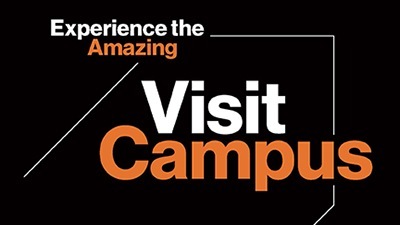MSHCI Interpretation Sample
- RIT/
- National Technical Institute for the Deaf/
- Academics/
- Departments/
- ASLIE/
- MSHCI Interpretation Sample
Instructions
Thank you for your interest in the master's degree in health care interpretation program. A video interpretation sample in American Sign Language is required to complete your application. Please follow the instructions below. After reading these instructions, please prepare a YouTube video and post the URL in the appropriate form field in the online application. Password-protected URLS will not be accepted.
-
Video Sample Interpretation Requirements
The video shows an experienced medical interpreter lecturing to bachelor-level students in an interpreting program. There are two deaf interpreting students in the class. Watch the video and record your interpretation in American Sign Language. After you have recorded your video, upload to YouTube (recommended) and submit the URL within your application.
-
Suggested Video Recording Guidelines
- Wear a solid colored top or shirt (no designs, lettering, stripes or plaids).
- Wear clothes that contrast your skin tone.
- Remove all rings and distracting jewelry, including face and tongue piercings.
- Hair should be away from your face and mustaches or beards should be trimmed.
- Avoid dark or brightly colored nail polish. It makes reading signs and fingerspelling difficult.
- Your video should be shot in a location that is quiet and has good lighting.
- Use a solid colored background.
- Align the camera so that you are framed from the hip to about an inch or two above your head. Your facial expression, fingerspelling and signs must be visible. (Check the camera framing and lighting before taping.)
- Stay within the frame during recording. Do not move from your original position. Do not sway or rock back and forth.
- Start the recording and count five seconds before you begin signing. Start your video with signing your first and last name.
If you have questions, please contact NTID Admissions at 585-475-6700, by videophone at 585-743-1366, or toll free at 866-644-6843.
Video and Transcript
Interpreting For Surgery (Transcript)
I’d like to talk to you today about interpreting on the day of surgery, for a deaf patient. Suppose you get a call from a free-lance agency asking you to interpret for surgery. What goes around in your head immediately? What do you think of? What is your schema for that? Have you had surgery before? Have you had perhaps a friend or significant others that have had surgery and you’ve accompanied them on the day of surgery? We always fall back on what we know to figure out where we are going as we interpret.
Of course one of the first things you want to know from the agency is who the deaf person is and, uh, what type of surgery it will be. And that will help you to make your decision. Often times, um, you’ll go and show up and realize that the deaf consumer isn’t actually the patient—maybe it’s a family member. So that kind of information is helpful for you to figure out if this is a good fit for you or not. Alright?
Often times they are tucked away in the basement of the hospital. So actually getting there is your first challenge. So you really need to plan accordingly and always show up very early on the day of surgery. Typically the patient is asked to arrive about an hour and a half before the surgery is scheduled. The reason for that is, it just takes time to get registered, to go back, um, to the pre-surgical area, change your clothes, put all their clothes in a bag, uh, those types of things. So you need to be prepared for a long wait before the surgery starts.
Another typical thing would be for their IV to be started at that point. And then once the patient is comfortable, pretty much they are just waiting then to see what time the OR will actually be ready for them. So checking in often with the nurse is important.
One thing you can typically expect is that things don’t happen on time. Often, uh, the case before your patient’s case will go long or short. You may get there and realize the patient before has cancelled and your patient is going to go in quite quickly. That’s one of the reasons why they bring them in an hour and a half ahead of time in case they can get them in quicker than the scheduled time. But often times the surgery before you has run long. Okay? So that’s one of the important things to realize that this is not a brief, typical appointment where you’re in and out in an hour or whatever the time frame the agency actually gives you. But it is often much longer than that.
So let’s say in this situation that you are going to be interpreting for a hearing child, who has deaf parents. And let’s say it’s a tonsillectomy, a pretty standard, basic surgery procedure.
So think for a second, I always try to pause and think for a second, about your consumers and where their heads might be at on the day of surgery. We can pretty much, uh, guarantee that that child is probably scared. Right? So you would expect that. And I’m sure those parents are worried and are very, um, concerned about their child and want to be very comforting and everything to go just right. So realize those things before you go in. Okay? And just think, put yourself in the shoes of your consumers for a minute so you can work in service of their goals as their entering in to this, uh, procedure for the day.
Once they are ready for the patient to go over to the operating room, um, you’ll accompany them. I would—I would imagine that, um, they let at least one of the parents in to the pre-anesthesia room—that’s a pre-op room. And what you can typically expect in that room is that the patient will be visited by the surgeon, just to say, “Hello, how ya doing? Everything’s great. I’ll see you in a few minutes.” Hopefully all of the forms have been already completed and signed off on in the pre-surgery appointment a week or so before the day of surgery, but if not, forms will be signed. If they can’t find it, they will be resigned. Okay? So just know that that could come up.
So typically you’ll see, you’ll be interpreting for the surgeon briefly, a longer discussion will probably be with the anesthesiologist, who is also an M.D. And they’ll talk about how their—the plan for sedation for the patient, what that will be like. Also briefly, other professionals who will be in the operating room will just stop by and say, “Hi, I’m going to be your nurse today. We’ll see you in the room!” Just so it’s a familiar face to the kid when—to the child when he arrives in the operating room. So all that will happen and then, um, of course you want to respect the privacy of the patient and the parent that’s there and give them time to say goodbye and those types of things, um, as the patient goes off to the operating room.
It’ll be important for you to communicate with the healthcare providers how they can contact you once the patient is done with surgery. So in this instance, um, you would have them text you, page you, whatever system is set up for that type of communication in the hospital. Once the child has gotten to the recovery room, typically, the surgeon will call or reach out to uh, the parents and that point in time. Often times in my experience with deaf parents, the, uh, surgeon will call me or text me and we’d arrange to meet and go see the parents directly so that they can have that conversation obviously, uh, interpreted for them.
So I would expect that. And often times, um, they will let a family member, if it’s a child, back into the recovery room just to sit with the patient so when the child wakes up either mom or dad will be there. So if that’s the case you would accompany that parent into the, um, recovery room, which is an interesting place to be if you’ve never been in a recovery room before. Um, that might be a nice thing to google or whatever and look what they're like because it can be very overwhelming with lots of patients and all with different types of surgeries. Um…
The goal of the recovery room is to stabilize the pain, make sure it’s under control and for the patient to wake up a little bit from the anesthesia. Once that is done they will return back to the surgical center. And once you get back there to the surgical center, things, depending of course on the operation, but with this operation things would probably proceed pretty quickly. Um, two things usually a patient has to do before they leave is to be able to pee and eat a few crackers or something. Get up, walk around, once they are steady on their feet pretty much they can move on and leave. Of course at that time discharge papers would be, um, reviewed and medications and follow up treatment would be discussed. Perhaps an appointment would be set up. So those are all the things that you can expect to happen on the day of surgery.




